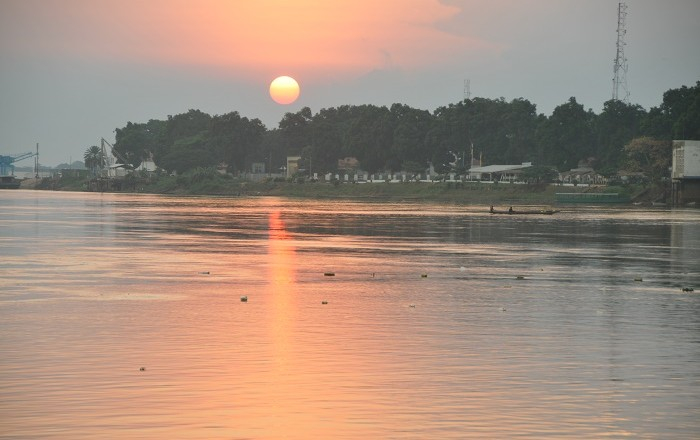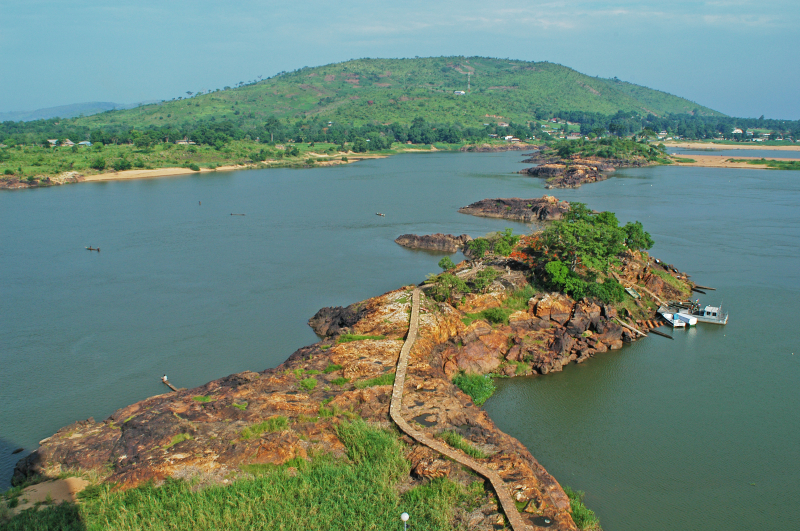Ubangi River

The Ubangi River, often written Oubangui, is the Congo River's greatest right-bank tributary in Central Africa. It originates at the junction of the Mbomou and Uele Rivers (mean annual discharge 1,350 m3/s and 1,550 m3/s, respectively) and flows west, marking the boundary between the Central African Republic (CAR) and the Democratic Republic of the Congo.
After passing through Bangui, the capital of the Central African Republic, the Ubangi bends southwest and flows south, marking the boundary between the Democratic Republic of the Congo and the Republic of Congo. At Liranga, the Ubangi enters the Congo River. The Ubangi is approximately 1,060 kilometers long (660 mi). It has a total length of 2,270 kilometers, including the Uele, its longest tributary (1,410 mi).
The drainage basin of the Ubangi is approximately 651,915 square kilometers (251,706 sq mi). Before being conquered by the Congo in the early Pleistocene, the Ubangi's upper reaches are thought to have flowed into the Chari River and Lake Chad. It serves as a vital transportation corridor for river boats traveling between Bangui and Brazzaville, and it connects to the Congo River.
The Ubangi River defines the border between the Central African Republic and the Democratic Republic of the Congo from its source to 100 kilometers (62 miles) below Bangui (DRC). After then, it serves as a border between the Democratic Republic of Congo and the Republic of Congo until it flows into the Congo River. This river is one of longest Rivers in Congo.
Length: 1060 km











